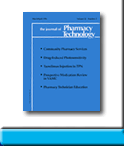 |
 |
GLYBURIDE/GLIPIZIDE COMBINATION THERAPY IN TYPE 2 DIABETES
Linda A Jaber
To request full article click here.
OBJECTIVE: Research has determined differences in the pharmacokinetics and therapeutic actions ofe glyburid and glipizide. The goal of this study was to evaluate the hypoglycemic effects of glyburide/glipizide combination therapy in the management of patients with diabetes not adequately controlled on either agent alone.
METHODS: Nine patients (3 men, mean age 50.6 ± 11 y) who were hyperglycemic on either glyburide or glipizide monotherapy continued their previous regimen with doses titrated up to maximum daily doses and dietary therapy for 4 weeks, and then they were placed on morning glipizide/evening glyburide combination therapy for 12 weeks.
RESULTS: Combination therapy had no significant effect on glycemic control; no differences in glycosylated hemoglobin (HbAIC) were observed (baseline, 15.3% ± 3.6%; monotherapy, 14.8% ± 3.3%; combination, 13.4% ± 3.5%). However, during combined glyburide/glipizide therapy, fasting plasma glucose was significantly reduced by 53.4 ± 20.0 mg/dL in young (age <50 y) and increased by 73.7 ± 26.9 mg/dL in older subjects. HbAIC was reduced by 3.8% ± 4.0% in young and increased by 1.7% ± 1.3% in older subjects. No significant changes in blood pressure, body weight, or lipid parameters occurred.
CONCLUSIONS: Our preliminary data indicate the limited usefulness of combined glyburide/glipizide therapy. The modest reduction in hyperglycemia observed in patients younger than 50 years of age warrant future studying.
J Pharm Technol 2002;18:9-12.
To request full article click here.
|
|
|
||
|

